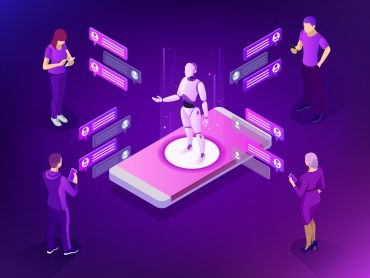
Personalization and marketing conversion goals are often at odds with the goals of development since they can slow down website performance.
It’s no secret that for any website-driven sales business, in other words, most businesses today, conversions play a critical role in sales success. To elevate the user experience and drive growth, developers often implement complex integrations that amount to thousands of lines of code and multiple solutions into their websites. Tactics such as A/B testing, personalization, localization, upsell and cross-sell aim to arm businesses with data that will drive online transactions. Additionally, delighting potential and current customers requires using tools that provide fast, rich, and interactive digital experiences.
Unfortunately, these can slow down the website, which actually hurts sales. This often puts the marketing goals of conversion at odds with the development since these assets can also slow down website performance. Poor website performance is proven to lose engagement and sales. In fact, improving the speed by one whole second leads to a 27% increase in conversion. This is what we call the personalization paradox.
Does performance matter to developers?
Many developers work on line-of-business apps, meaning their updates, changes, and improvements are internal-facing, and no one outside that company will ever see them. For those developers, it may be true, performance may not be as crucial. But the statistics about customer-facing experiences tell a completely different story about the importance of performance:
- Pinterest reduced perceived wait times by 40%, and this increased search engine traffic and sign-ups by 15%.
- For Mobify, every 100ms decrease in homepage load speed worked out to a 1.11% increase in session-based conversion, yielding an average annual revenue increase of nearly $380,000.
- When AutoAnything reduced page load time by half, they saw a boost of 12% to 13% in sales.
While it may be an assumption that developers don’t care about the user experience and instead only focus on the deliverable at hand, the reality is that it can’t be further from the truth. When developers create something, it’s designed to be used. The thought of users leaving because performance is poor or slow is the last thing they want.
See also: The Secret to Personalization at Scale
The Associated Costs of Improving Site Performance
Well-Written Code: In an ideal world, enterprises produce well-written code for all the needed features, including all the third-party scripts needed for additional web functionalities, and the website would still function at warp speed. Developers call this the zero-cost abstraction: adding more code, more widgets, and more of all the tools with no runtime costs and no impact to performance).
But in reality, that’s not how it works. Every element added to a website directly affects performance. Even efficient coding languages, such as JavaScript and CSS, can weigh down a website.
The average web page takes more than 14 seconds to get to an interactive page due to excess JavaScript (also known as “website bloat”). But research shows that a user pays attention only for about 10 seconds, after which they get distracted, lose interest or leave the website altogether.
The Solution and Strategy to The Personalization Paradox
We Need to Take an API-First Strategy: Today, companies need an agile strategy to offer consumers a blazing fast website that also gives the developers and non-developers the flexibility to quickly change, modify and improve web pages without compromising speed or quality. While API-first solutions have their benefits, they still require a developer to make website changes or update web pages. Dependency on developers means that the other company stakeholders, such as the marketing team, must rely on the developers to make the changes. Understandably, this can be a frustrating experience for everyone on the team.
The Answer is Composable Solutions: The ideal solution is an API-driven platform that is still composable and simplified. Composability allows companies to swap and pair software components at will. In addition to giving non-developer teams a platform to make updates quickly, a composable platform allows developers to address performance with code that is easy to understand and change. Ultimately, this set up empowers all internal teams to create and optimize high-speed experiences on websites and apps.
The caveat: Installing a composable, visual development platform like this won’t make your website faster overnight. A slow website still needs other fixes, such as removing third-party JavaScript and optimizing first-party JavaScript.
Delivering an excellent user experience and driving revenue should not be at odds with each other. Internal teams should be able to work together and push updates to an eCommerce website quickly without compromising quality and performance. Giving more than the developers the power to change web pages quickly will positively impact conversions.





























